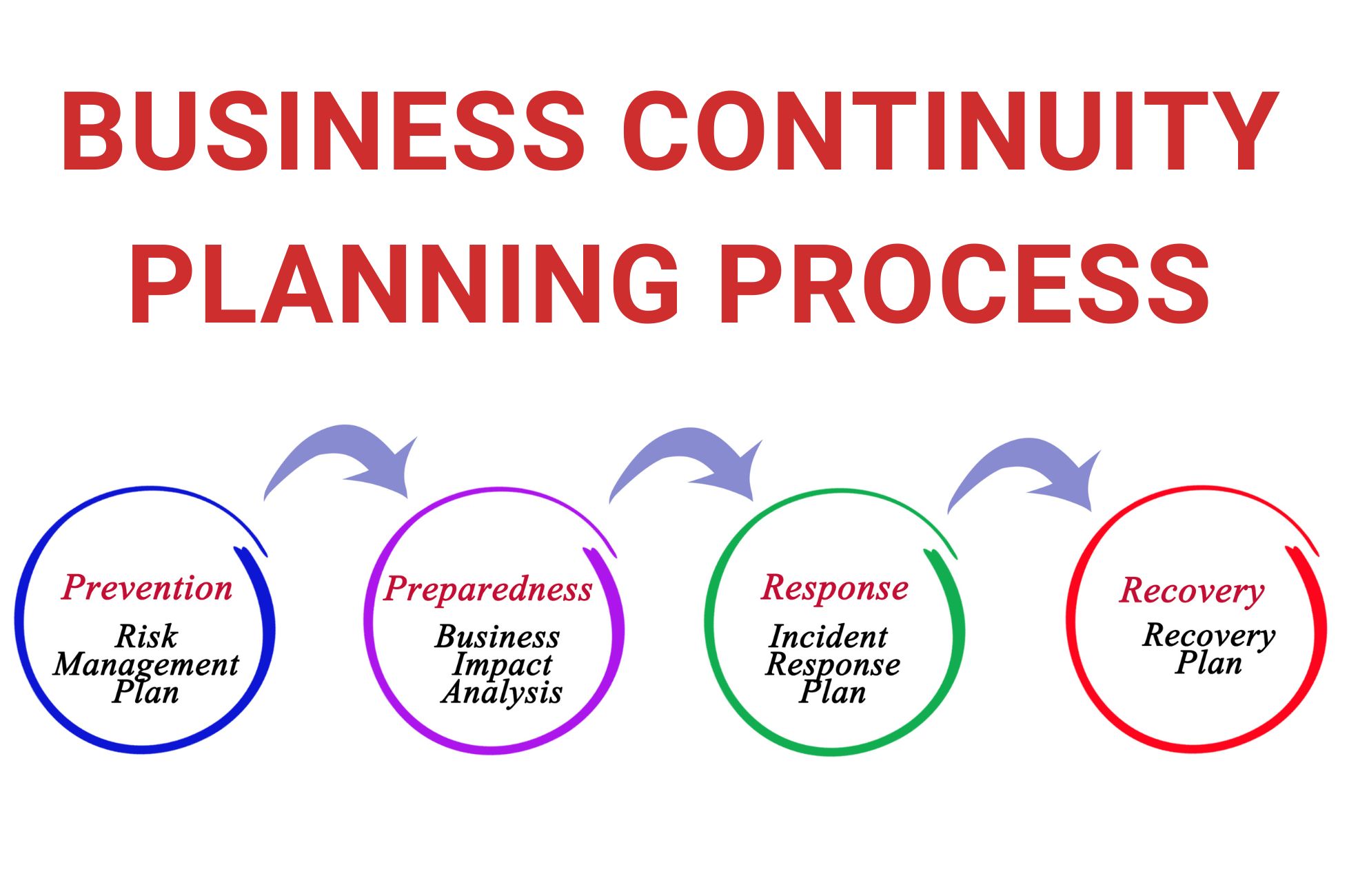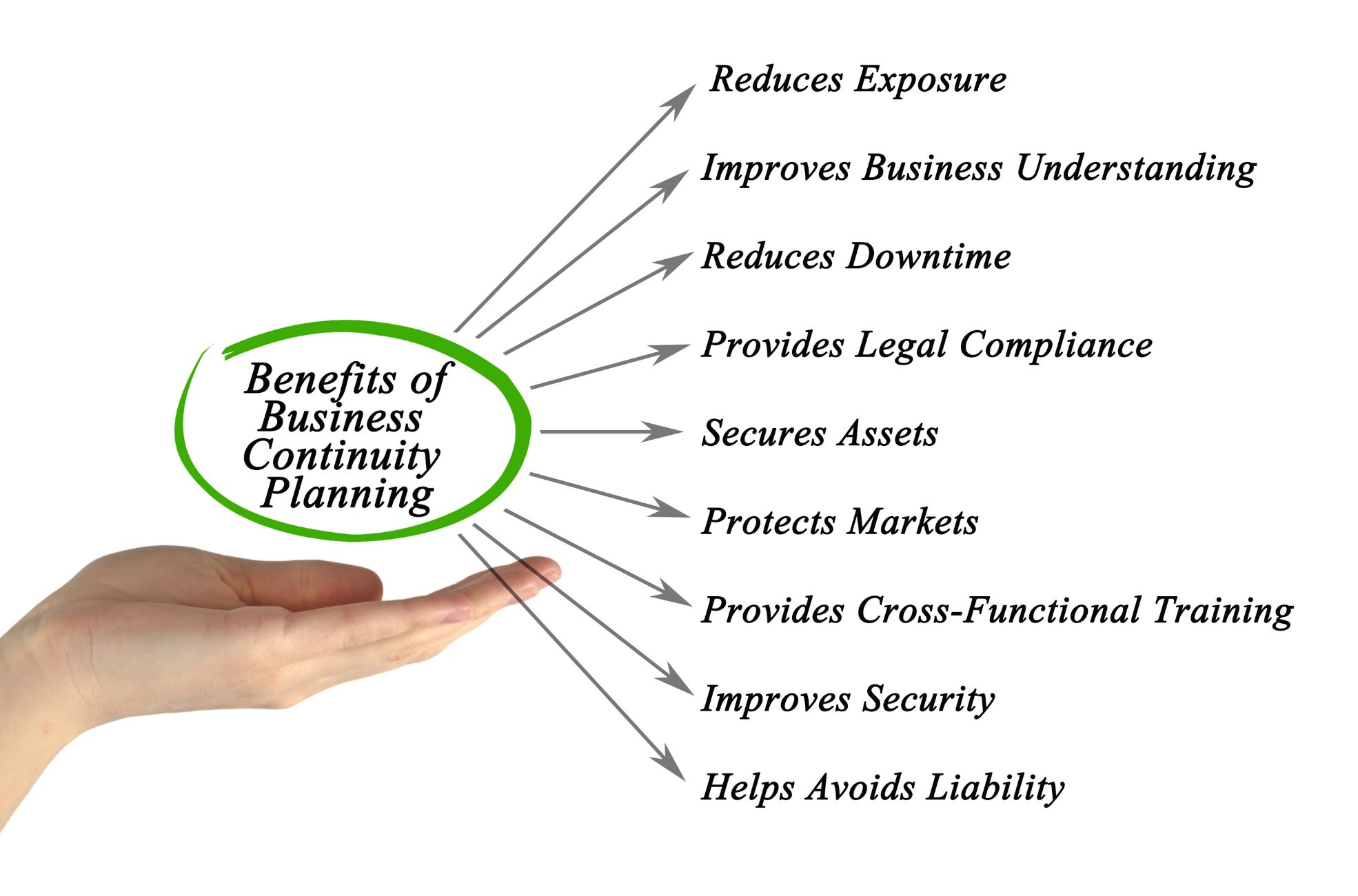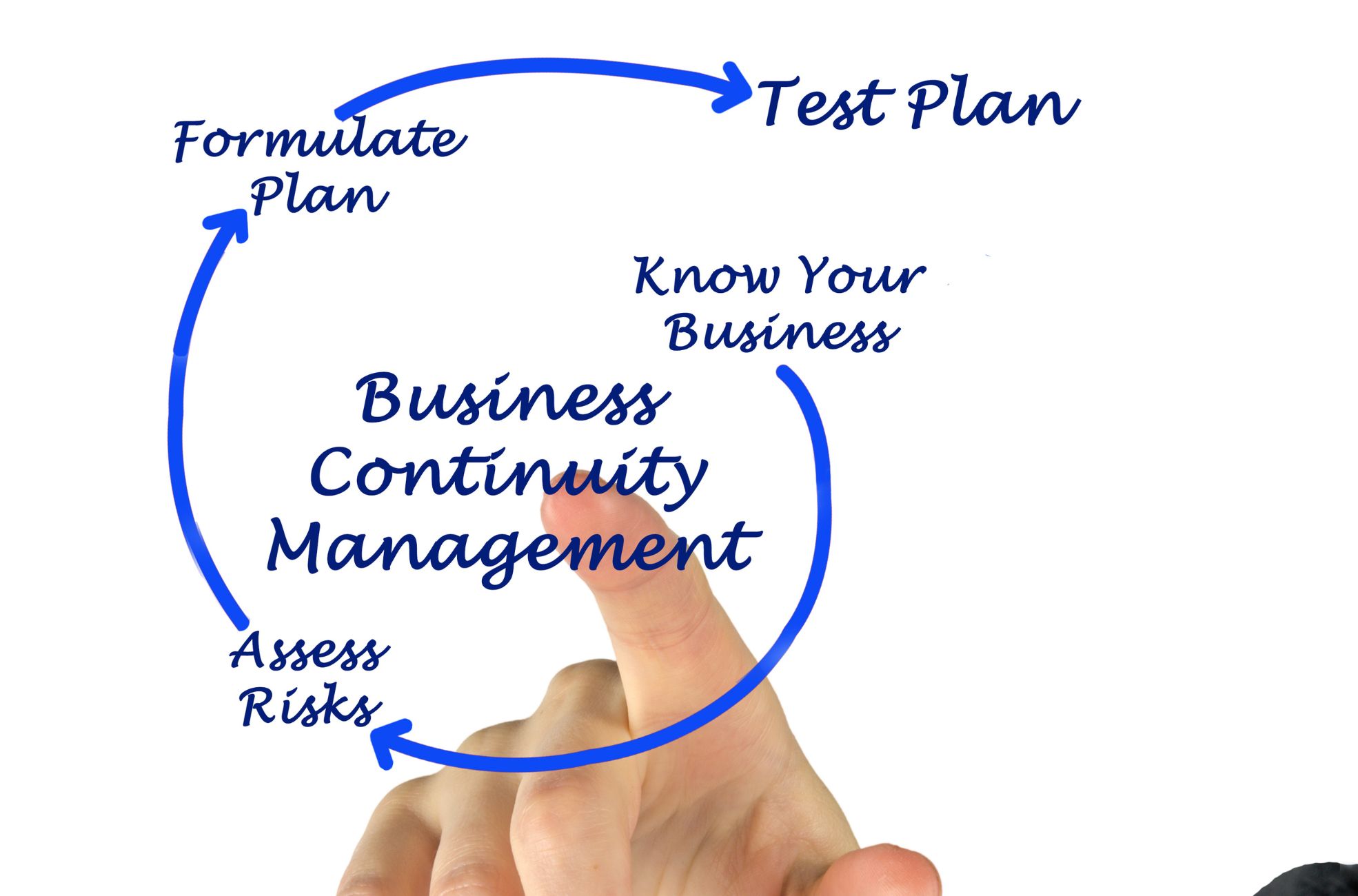A Business Continuity Plan (BCP) is an essential blueprint for sustaining operations amidst unexpected disruptions. This meticulous guide delves into the nuances of creating a robust BCP, ensuring your organisation can weather crises and maintain critical functions, regardless of adversities.
From understanding the importance of a BCP in risk management to implementing and maintaining your plan, each step is crucial for safeguarding your company’s future. With strategic planning, a keen assessment of risks, and proactive measures, you can construct a bulletproof business continuity plan that stands the test of time and prepares your team for any contingency.
Business Continuity Planning
What Is a Business Continuity Plan (BCP)
A Business Continuity Plan (BCP) is a strategic framework designed to prepare a company to keep operations running during and after a significant disruption. It’s a comprehensive approach that ensures critical functions are upheld or quickly reinstated, protecting personnel, assets, and the company’s overall reputation. The core aim of a BCP is to provide a proactive course of action that can prevent or mitigate the impact of potential threats, such as cyber-attacks or natural disasters.
It’s crucial to regularly test your BCP to spot and fix any weaknesses, ensuring the plan withstands real-world pressures.
Importance of BCP in Risk Management
A BCP is indispensable in risk management. It involves a thorough process of identifying the full spectrum of risks that could adversely affect a company’s operations. These risks include natural disasters like floods and fires and technological threats such as data breaches. A BCP doesn’t just stop at identification; it forces a company to consider how these risks could impact operations.
Then, you have to develop strategies to counter these risks and put procedures in place to lessen their effects. These procedures should be continuously tested and updated. Here’s why: disruptions can lead to significant financial loss and increased costs. They can also cause you to lose customers to competitors.
While insurance is necessary, it’s not a catch-all solution. It might not cover all expenses or the loss of market share due to operational downtime.
Key Components of an Effective BCP
An effective BCP is built on several key elements. It starts with a business impact analysis, which pinpoints the most critical areas of the company that could be affected by disruptions. Recovery strategies are then crafted to ensure these critical functions can be quickly restored.
The organisational structure is also key, with clear roles and responsibilities to ensure an efficient response and recovery. Training is essential to prepare all personnel to carry out the plan effectively. You can also create detailed checklists that include emergency contacts, resource inventories, data backups, and other vital information.
It is crucial to regularly test both the plan and the continuity team. This ensures the BCP can be effectively applied to various risk scenarios and allows for fixing any shortcomings.
Differences Between BCP and Disaster Recovery Plan
BCPs and disaster recovery plans are similar but serve different purposes. A disaster recovery plan focuses explicitly on restoring IT infrastructure and data access after a disruption. It’s typically the job of IT professionals to ensure minimal downtime and prevent technology-related losses.
On the other hand, a BCP covers the entire organisation’s ability to continue operations, including aspects like customer service and supply chain management. The goal of a BCP is to minimise overall costs and losses from any disruption, not just technological issues.
As a result, a BCP involves a wider range of personnel from various departments, all trained to respond to and manage disruptions according to the established continuity strategies.

Assessing Business Risks and Impacts
Conducting a Business Impact Analysis (BIA)
The BIA is essential for predicting the repercussions of business interruptions and collecting data needed to devise recovery strategies. It assesses potential loss scenarios and quantifies the repercussions, such as diminished sales, heightened expenses, and customer dissatisfaction. The timing of a disruption can greatly affect the severity of the loss, highlighting the need to understand the different impacts at various times.
Effective BIAs utilise questionnaires to collect insights from managers and staff on the repercussions of interruptions to their functions. The outcome is a report that documents the anticipated repercussions, evaluates the financial implications, and establishes the order for reinstating business processes, prioritising the most vital ones.
Identifying Critical Business Functions
The BIA is integral to the process of pinpointing vital activities. These activities are essential for the organisation’s continuity and must be maintained during a disruption. The identification process should be comprehensive, incorporating feedback from different organisational levels.
This may involve concentrating on the most impactful departments or units for substantial enterprises. These functions, whose interruption would lead to the most severe operational and financial repercussions, should be reinstated with utmost urgency.
Estimating the Potential Impact of Disruptions
This step involves examining scenarios that could cause significant business interruptions and assessing them for financial repercussions. This includes the costs related to failures, such as diminished cash flow, equipment replacement, and profit loss.
Evaluating the impact over time is crucial for establishing recovery strategies, setting priorities, and determining resource needs. For IT systems, this entails pinpointing applications crucial to business operations, understanding system interdependencies, and calculating the costs related to system downtimes.
Prioritising Risks and Resources
After identifying the vital business functions and assessing the potential impacts, the next step is prioritising the risks and resources. This involves discerning which functions are crucial for revenue generation and the technological tools and applications that support these functions. Compliance and security measures necessary in an alternative environment must also be considered.
This step includes determining whether to use a third-party or cloud provider and the technology solutions required to sustain critical tools and applications. Prioritising recovery is about safeguarding essential functions while remaining cost-effective. Not all IT services are crucial, and the disaster recovery environment may not require immediate restoration.
Collaborating with leadership and key stakeholders is vital to outline the SLAs needed for essential workloads. The prioritisation discussion centres on what the organisation can and cannot operate without. RTO and RPO are key metrics in this process, dictating the speed at which failover should be operational and the acceptable data recovery period.

Developing the Continuity Strategy
Creating a robust business continuity strategy is crucial for protecting your company’s operations from unexpected disruptions. This strategy should include a well-thought-out series of actions that ensure the maintenance of critical business functions during a crisis. It’s important that your strategy aligns with the disaster lifecycle, which encompasses the stages of prevention, preparedness, response, recovery, and mitigation.
Formulating Response Strategies
The creation of response strategies is at the heart of a BCP. These strategies are designed to minimise risks that persist despite existing controls. They outline the steps to take when various incidents occur and describe how to recover from significant disruptions. You’ll need a comprehensive risk and impact assessment to craft these strategies. This assessment pinpoints potential threats, from natural disasters to cyber-attacks. It evaluates their potential impact on revenue, customer satisfaction, and employee safety.
Getting input from stakeholders like employees, customers, suppliers, and local communities is key to understanding potential risks and effective recovery strategies. Their insights can provide a broader perspective on your business’s challenges and highlight resources that could be tapped into during a crisis.
Identifying Recovery Time Objectives (RTO)
A critical element in your continuity strategy is identifying RTOs. The RTO is the maximum amount of time you can afford for a business process to be down after a disaster before the consequences become too severe. Figuring out the RTO involves understanding how much downtime you can tolerate and the implications of outages on business operations. Along with the Recovery Point Objective (RPO), which defines the acceptable amount of data loss measured in time, the RTO is crucial for developing actionable recovery strategies.
Developing Crisis Management Procedures
Crisis management procedures lay out how your organisation will respond to an emergency. These procedures must be comprehensive, covering essential crisis management and emergency response actions. They should emphasise coordination and communication within the team. Training your employees on these procedures and conducting regular drills is vital to ensure everyone’s prepared.
Given that the business environment is constantly evolving, you should frequently review and update these procedures to reflect new risks and changes in the business landscape.
Creating an Incident Response Team
An incident response team is a specialised group within your organisation tasked with executing the BCP during a crisis. This team should include members from various departments with expertise in business continuity and cyber security incident response. The growing intersection between these two areas makes this dual expertise necessary.
By viewing incident response and business continuity as intertwined, your organisation can streamline recovery procedures and processes, leading to a quicker, more effective, and efficient response to security breaches and data leaks.
How To Create A Business Continuity Plan
Structuring the Plan Documentation
The foundation of a BCP is its structure, which should be clear and accessible to all stakeholders. You’ll start by defining the plan’s objectives, ensuring they align with your organisation’s overall mission.
A well-articulated mission statement sets the tone and direction for the continuity efforts. Governance is another critical aspect involving outlining the business continuity team responsible for the plan’s execution.
This team should clearly understand its roles and responsibilities within the BCP framework. The core of the plan consists of detailed procedures and appendices, which provide guidance on how to respond to various scenarios.
These should be complemented by a training program outlining the curriculum and schedule for both initial and ongoing refresher training to ensure all team members are prepared.
Establishing guidelines and schedules for regular testing and incorporating a process for capturing insights and learning from these exercises is vital to ensure the plan’s effectiveness. This feedback loop will enable continuous improvement of the plan.
Detailing Recovery Procedures
Recovery procedures are the actionable steps that guide an organisation through the aftermath of a disruption. They should include strategies to prevent crises, reactive strategies for immediate response, and recovery strategies to resume operations at an acceptable level of service.
Conducting a BIA helps you understand potential disruptions’ financial and operational effects. This analysis will inform the development of trigger and disaster declaration criteria, determining when to activate the BCP. Detailing succession plans for key roles and identifying alternate suppliers ensures that your organisation can maintain standards and operations even when primary resources are compromised. The operations plan should describe how daily activities will resume post-disruption.
The crisis communication strategy outlines how to keep employees, customers, and third parties informed. The incident response plan should cover a range of likely incidents, detailing how the organisation will react.
Alternate site relocation plans, interim procedures, and strategies for restoring critical data are also essential components of a comprehensive recovery procedure.
Establishing Communication Protocols
Effective communication is the lifeline of any crisis management effort. Establishing communication protocols involves detailing how your organisation will communicate internally and externally during a disruption. This includes maintaining up-to-date contact information for key employees, vendors, and critical third parties.
The communication strategy should also address the troubleshooting process for applications and systems, ensuring that everyone knows whom to contact and how to proceed in various scenarios. This clarity is crucial for maintaining order and efficiency during a crisis.
Integrating Vendor and Supply Chain Contingencies
In today’s interconnected business environment, third-party risk management is integral to BCP. You must assess and mitigate risks vendors and supply chains pose, as these external entities often handle critical data and resources.
Identifying third-party applications, assets, and on-premise or internally managed assets is the first step. Then, evaluate which scenarios would have the most significant business impact and ensure you’re prepared for these events.
Scrutinising vendor partner agreements helps you understand how key vendors can support your organisation in maintaining or resuming operations. This includes determining backup and recovery information for all critical systems and services and identifying key personnel related to these systems.
Incorporating these contingencies into the BCP helps reduce the risk of data loss, vendor bankruptcy, and business disruptions, ultimately minimising downtime and ensuring your organisation can continue to operate effectively in the face of adversity.

Implementing and Maintaining Your BCP
Training and Awareness for Employees
For a BCP to be effective, all employees must be well-versed in the plan and their specific responsibilities during an emergency. Training initiatives must be developed to inform staff about the various risks and the critical nature of their roles in the event of a disruption.
Leadership plays a pivotal role in promoting this understanding. They must ensure that employees are prepared to act decisively and effectively when faced with a crisis.
Conducting Regular Testing and Exercises
Ensuring a BCP is functional and robust requires consistent testing and practice drills. These activities validate the plan’s practicality, equip stakeholders for actual emergencies, identify weaknesses, and enhance the organisation’s overall resilience.
Frequent testing methods include tabletop exercises, structured walk-throughs, and full-scale simulations. Organisations should conduct these tests multiple times annually, covering a variety of potential disruptions to evaluate the preparedness of the business and its employees.
Updating the Plan to Reflect Changes
As the business environment evolves, so should the BCP. Revising the plan is necessary to incorporate new technologies, adapt to market changes, or respond to personnel shifts.
The BCP must be dynamic, undergoing regular scrutiny and modification to maintain its relevance and effectiveness. The frequency of these revisions should align with the organisation’s unique needs and the landscape of risks it navigates.
Reviewing and Auditing Plan Efficacy
Regular reviews and audits are necessary to assess the BCP’s effectiveness and identify areas for enhancement. An internal audit can assess potential risks or threats to the plan’s success, ensuring that the BCP supports organisational resilience and the continuity of essential operations.
Employing structured audit frameworks from entities like the British Standards Institution or the International Organization for Standardization can provide a systematic approach to evaluating the BCP. A thorough audit verifies the plan’s adequacy and yields constructive feedback, which can inform necessary modifications and improvements.
Sealing Your BCP with Confidence
In crafting your Business Continuity Plan, you’ve navigated the landscape of potential threats, laid the foundations for resilience, and constructed protocols that pave the way for steadfast recovery. Your BCP is more than just a document—it’s a testament to your commitment to business survival and excellence. It’s essential to keep the momentum of vigilance by continually training your teams, testing procedures, and refining strategies. Like the finest of architects, understand that a blueprint is only as good as its execution on the ground. By committing to regular updates and practice, your business is shielded and primed to emerge stronger from the unexpected storms of the corporate world. Now, with clarity and readiness, step forward into a future where continuity equates to opportunity.









